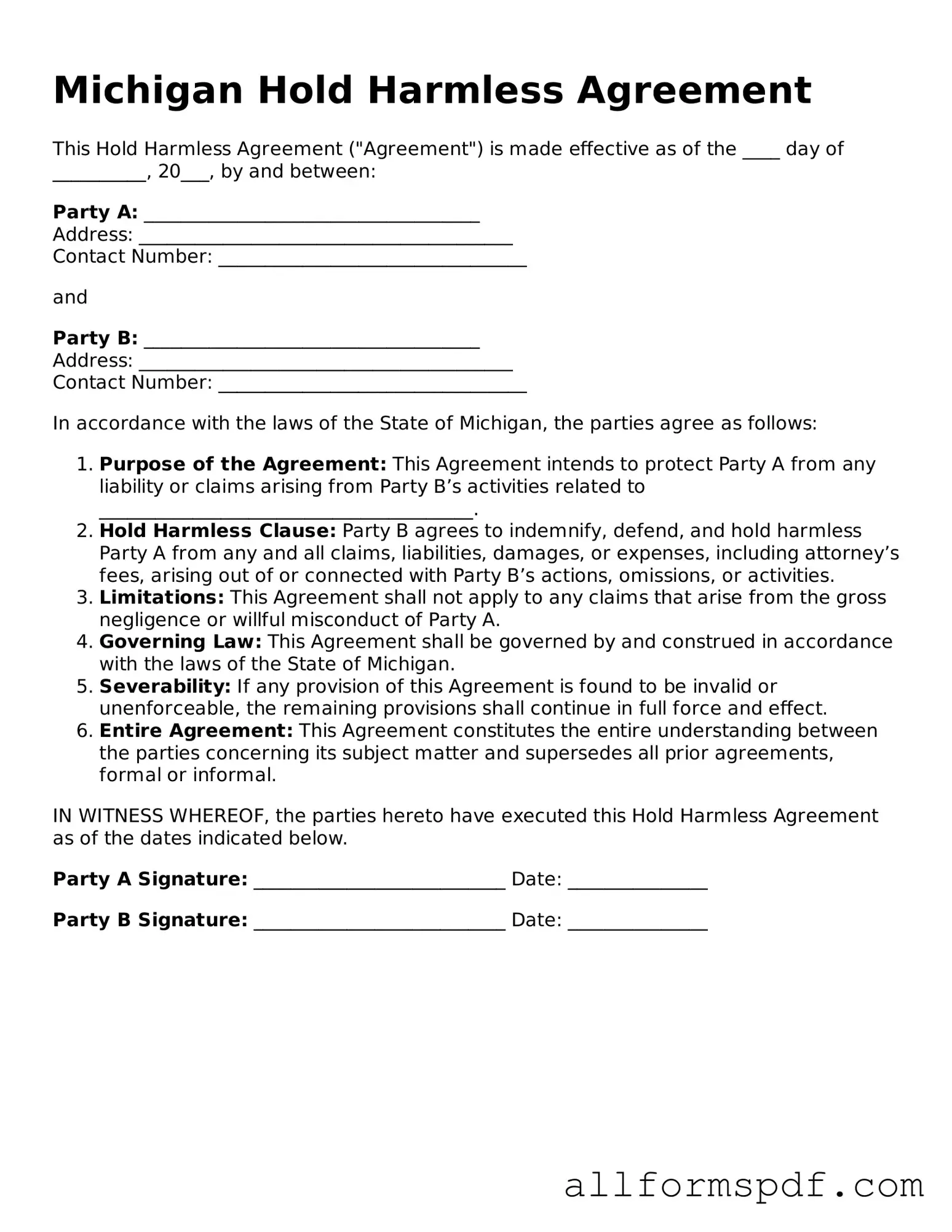Filling out the Michigan Hold Harmless Agreement form can be straightforward, but many people make common mistakes that can lead to complications. One of the most frequent errors is failing to provide complete information. When individuals leave out crucial details, such as names, addresses, or specific activities, it can render the agreement invalid. Always ensure that every section is filled out thoroughly.
Another mistake is not reading the entire document carefully. Many signers skim through the agreement, overlooking important clauses. This can result in misunderstandings about the rights and responsibilities outlined in the form. Take the time to read each section carefully to understand what you are agreeing to.
Some people also neglect to date the agreement. A missing date can create confusion regarding when the agreement was made. It is essential to include the date to establish a clear timeline and to avoid any disputes later on.
Additionally, individuals often forget to sign the document. A signature is a critical component of any agreement. Without it, the form lacks legal validity. Always double-check that all required signatures are present before submitting the form.
Another common error involves using incorrect or outdated forms. Using an old version of the Hold Harmless Agreement can lead to legal issues, as laws and requirements may have changed. Always ensure you are using the most current version of the form.
Lastly, people sometimes fail to keep copies of the completed agreement. Without a copy, it can be challenging to prove the terms agreed upon if disputes arise. Always retain a signed copy for your records to protect your interests.
